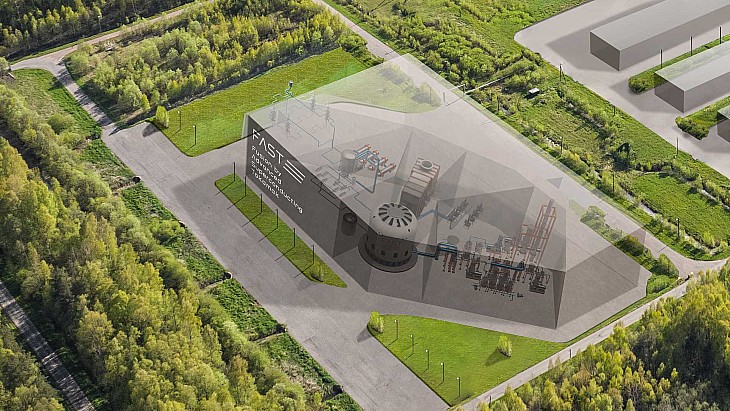The component - measuring 45.5 metres in length, 15.2 metres in width, 8.37 metres in height and weighing about 418 tonnes - was lifted into place on 24 August using a 3200-tonne crawler crane.
China National Nuclear Corporation (CNNC) noted this was the first time the bridge and its components were installed as a whole in China. Previously, the various components of polar cranes have been assembled on the ground for data measurements before being disassembled, lifted into place separately and then reassembled. In the case of the bridge for Zhangzhou 1, the electrical beams, non-electric beams, end beams, horizontal wheels, rotating mechanism and other components were assembled on the ground and then hoisted as a whole.
"The use of new installation technology simplifies the tedious disassembly and assembly process of segmented hoisting, which greatly improves the construction efficiency," CNNC said. It noted the new process reduced the time needed to install the polar crane by 15 days.
Polar cranes are used in pressurised water reactors to lift reactor vessel heads, internals, and a multitude of lighter loads during refuelling outages. In some plants the polar crane is also used to lift the reactor vessel itself and the steam generators during construction.
CNNC said installation of the polar crane will "lay a solid foundation for the subsequent introduction of main equipment and the hoisting of the inner dome".
In May 2014, the local government gave approval for Phase I of the Zhangzhou plant, comprising two AP1000 units. The National Nuclear Safety Administration gave approval in December 2015 for the units and confirmed site selection in October 2016. Construction of Phase I had originally been expected to start in May 2017. However, CNNC subsequently decided to use the Hualong One design instead. Two more units are planned for Phase II of the plant and a further two proposed for Phase III.
China's Ministry of Ecology and Environment issued construction licences for Zhangzhou units 1 and 2 on 9 October 2019 to CNNC-Guodian Zhangzhou Energy Company, the owner of the Zhangzhou nuclear power project which was created by CNNC (51%) and China Guodian Corporation (49%) in 2011. Construction of unit 1 began one week later, with that of unit 2 starting in September 2020. The units are scheduled to enter commercial operation in 2024 and 2025, respectively.

.jpg)



_82983.jpg)
_34792.jpg)
_16403_79272.jpg)


_76087_55556.jpg)



